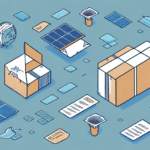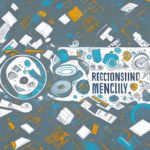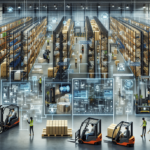The Benefits of Sustainable Packaging for Businesses and the Environment
As awareness of the environmental impact of packaging grows, more and more businesses are turning to sustainable packaging as a solution. But what is sustainable packaging, and why is it important? In this article, we'll explore the many benefits of sustainable packaging for both businesses and the environment.
What is Sustainable Packaging and Why is it Important?
Sustainable packaging is designed to minimize its negative impact on the environment. This includes using materials that are renewable, recyclable, or biodegradable, as well as optimizing packaging for shipping and storage to reduce waste and energy consumption. The importance of sustainable packaging stems from the significant negative impacts traditional packaging methods have on the environment.
Additionally, sustainable packaging can positively influence a company's reputation and profitability. Consumers are increasingly aware of the environmental impacts of their purchases and are more likely to support companies that prioritize sustainability. According to a study by Nielsen, 66% of consumers are willing to pay more for sustainable products. By implementing sustainable packaging practices, companies can not only reduce their environmental footprint but also attract and retain environmentally conscious customers.
The Environmental Impact of Traditional Packaging Methods
Waste Generation
Traditional packaging methods, such as the use of single-use plastics or non-recyclable materials, generate significant amounts of waste. This waste contributes to landfills and pollution, requiring substantial energy for proper disposal.
Carbon Emissions
Conventional packaging often demands more energy for production and transportation, leading to increased carbon emissions and other environmental impacts.
Impact on Wildlife and Ecosystems
Traditional packaging materials can harm wildlife and disrupt ecosystems. Animals may ingest plastic packaging, mistaking it for food, leading to injury or death. Additionally, plastic waste can accumulate in water bodies, affecting aquatic life and entire ecosystems.
Fortunately, there are alternative packaging methods that mitigate these negative impacts. Biodegradable and compostable materials, such as plant-based plastics and paper, offer more environmentally friendly options. Reusable packaging like glass jars or cloth bags also helps reduce waste and energy consumption, fostering a more sustainable future.
Sustainable Packaging Reduces Waste and Carbon Footprint
Use of Recycled and Biodegradable Materials
Sustainable packaging often utilizes recycled or biodegradable materials, significantly reducing the amount of waste that ends up in landfills. For instance, using recycled cardboard or plant-based plastics can lower the environmental impact of packaging.
Optimized Shipping and Storage
By optimizing packaging for shipping and storage, companies can reduce the energy required for transportation. This not only lowers the carbon footprint of the packaging itself but also that of the entire supply chain.
Reusability and Repurposing
Many sustainable packaging solutions are designed for reuse or repurposing. For example, reusable containers for shipping and storage can be returned and refilled, eliminating the need for constant new packaging materials.
Moreover, sustainable packaging influences consumer behavior. Environmentally conscious consumers actively seek out products with sustainable packaging, allowing companies to differentiate themselves from competitors using traditional, less eco-friendly materials.
How Sustainable Packaging Can Improve Brand Image
Enhancing Brand Reputation
Sustainable packaging demonstrates a company's commitment to environmental responsibility, enhancing its brand reputation. Consumers are more likely to support brands that prioritize sustainability.
Cost Savings
Using biodegradable or recyclable materials can reduce waste disposal costs. Additionally, efficient packaging design can lower shipping costs by minimizing the use of materials and optimizing space.
Employee Morale
Commitment to sustainability can boost employee morale and pride in their company, leading to increased productivity and a stronger sense of teamwork.
Cost-Effective Solutions for Sustainable Packaging
Utilizing Recycled Materials
Recycled materials often cost less than new materials. For example, recycled paper and cardboard can be more affordable, providing a sustainable and cost-effective packaging option.
Biodegradable Materials
Biodegradable materials, although sometimes initially more expensive, offer long-term environmental benefits and potential cost savings by reducing waste management expenses.
Closed-Loop Systems
Implementing a closed-loop system, where packaging materials are collected, recycled, and reused in new packaging, can significantly reduce the need for new materials and minimize waste. Companies like Dell have successfully adopted such systems, resulting in both cost savings and environmental benefits.
The Future of Sustainable Packaging: Innovations and Trends
Bioplastics and Plant-Based Materials
Bioplastics derived from renewable resources like corn or sugarcane, and plant-based materials such as bamboo and mushroom-based packaging, are leading the way in sustainable packaging innovations.
Edible Packaging
Edible packaging made from natural ingredients like seaweed or starch is gaining attention. This type of packaging reduces waste and offers a unique consumer experience.
Reusable Packaging
The development of reusable packaging solutions, which can be returned and refilled multiple times, is another promising trend aimed at reducing waste and environmental impact.
Choosing the Right Sustainable Materials for Your Business
Selecting appropriate sustainable materials involves considering factors such as environmental impact, cost, and performance. The optimal packaging solution depends on the products being packaged, shipping and storage requirements, and customer preferences. Collaborating with packaging suppliers specializing in sustainable solutions can help ensure the selection of the most suitable materials for specific business needs.
Case Studies: Success Stories of Businesses Using Sustainable Packaging
Numerous businesses have successfully adopted sustainable packaging, yielding significant benefits. For instance, Patagonia, an outdoor clothing company, has been using recycled polyester since 1993, saving over 76 million plastic bottles from landfills. Another example is Nestlé, which is committed to achieving zero waste in its packaging by 2020. These success stories highlight how sustainable packaging can drive environmental and business advantages.
Overcoming Challenges in Implementing Sustainable Packaging Practices
Adopting sustainable packaging can present challenges, particularly for industries reliant on traditional methods. Common obstacles include higher initial costs, supply chain complexities, and resistance to change. However, these challenges can be mitigated with strategic planning and support. Partnering with packaging suppliers and sustainability experts can facilitate the transition to sustainable packaging, ensuring that businesses navigate the complexities effectively.
Tips for Educating Consumers About the Importance of Sustainable Packaging
Educating consumers about sustainable packaging is crucial for building awareness and support. Effective strategies include:
- Providing information on product packaging about sustainable practices.
- Using social media platforms to share insights and updates on sustainability efforts.
- Partnering with environmental organizations to promote sustainability initiatives.
By engaging in these activities, businesses can foster a dialogue with customers, encouraging support for sustainable practices and cultivating a culture of environmental responsibility.
Government Regulations and Incentives for Adopting Sustainable Packaging Practices
Governments worldwide are implementing regulations and incentives to promote sustainable packaging. For example, the European Union has established recycling targets for packaging materials, while certain U.S. states require the use of recycled materials in packaging. Additionally, governments may offer tax breaks or grants to businesses that adopt sustainable packaging practices, further incentivizing the transition to environmentally friendly packaging solutions.
Collaborative Efforts in the Industry to Promote Sustainability
Collaboration among businesses, packaging suppliers, and other stakeholders is essential to advancing sustainability in the packaging industry. Notable initiatives include:
- Sustainable Packaging Coalition: A membership-based organization that promotes sustainable packaging practices through resources and education.
- Ellen MacArthur Foundation: Focuses on the circular economy, aiming to eliminate waste and pollution from the packaging industry through innovative solutions.
These collaborative efforts help drive industry-wide improvements and foster a collective commitment to sustainability.
How to Measure the Impact of Your Company's Sustainability Efforts
Measuring the impact of sustainability initiatives is vital for evaluating progress and identifying areas for improvement. Key metrics include:
- Carbon Footprint Reduction: Tracking the decrease in greenhouse gas emissions resulting from sustainable packaging practices.
- Waste Reduction: Monitoring the amount of waste diverted from landfills through recycling and reusable packaging.
- Customer Satisfaction: Assessing customer perceptions and satisfaction related to sustainability efforts.
Regularly measuring and reporting these metrics enables businesses to track their sustainability progress and make informed decisions for future improvements.
Conclusion: The Business Case for Sustainable Packaging and a Better Future
Sustainable packaging is not only beneficial for the environment but also advantageous for businesses. By reducing waste, lowering costs, and enhancing brand image, sustainable packaging solutions enable businesses to thrive in an increasingly environmentally conscious marketplace. As the packaging industry continues to innovate, sustainable solutions are becoming a key driver of growth and innovation, promoting a more sustainable future for both businesses and the planet.






















